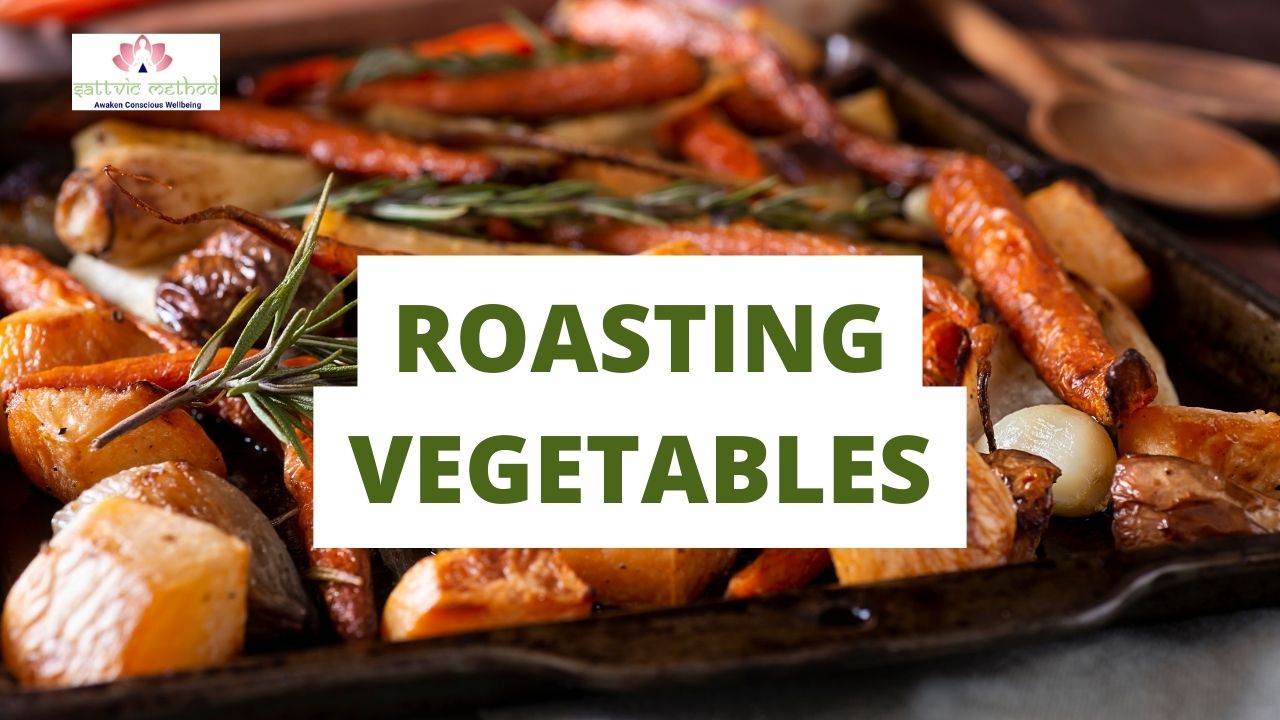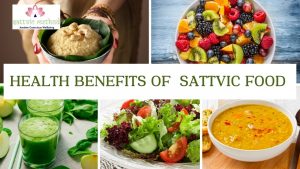Are you ready to take your vegetables from ordinary to extraordinary? In this guide, we’ll show you how to unlock the full potential of your veggies by roasting them to perfection. With a little bit of heat and a lot of love, you’ll discover a whole new world of flavors and textures.
Roasting vegetables is a game-changer when it comes to taste. The process caramelizes the natural sugars, bringing out their inherent sweetness and creating a beautiful golden crust. Whether you’re a carnivore looking to incorporate more plant-based options into your diet or a veggie enthusiast seeking fresh ways to enjoy your favorite produce, this guide is for you.
We’ll walk you through everything you need to know, from selecting the right vegetables to achieving that perfectly roasted crunch. Plus, we’ll share some of our favorite flavor combinations and techniques to elevate your culinary creations.
Get ready to savor the flavors, as we dive into the world of roasting vegetables and unveil the secrets to maximum deliciousness.
The benefits of roasting vegetables
Roasting vegetables not only enhances their flavor but also offers a range of health benefits. When you roast vegetables, the high heat causes the natural sugars to caramelize, creating a depth of flavor that is hard to achieve through other cooking methods. Additionally, the caramelization process adds a touch of sweetness that can make even the most reluctant vegetable eater fall in love.
Another benefit of roasting vegetables is that it can increase the bioavailability of certain nutrients. The heat breaks down the cell walls of the vegetables, making it easier for your body to absorb essential vitamins and minerals. Plus, roasting allows you to use less oil compared to frying, making it a healthier option for those watching their calorie intake.
Incorporating roasted vegetables into your diet can also help you meet your daily fiber requirements. Vegetables like cauliflower, broccoli, and Brussels sprouts are high in fiber, which aids digestion and keeps you feeling fuller for longer. So, not only will you be enjoying a burst of flavor, but you’ll also be doing your body a favor.
Understanding the roasting process
To achieve that perfect roasted vegetable, it’s important to understand the roasting process. When you roast vegetables, you’re essentially subjecting them to dry heat, which causes the natural sugars to caramelize and intensify their flavors. The high temperature also creates a crisp exterior while maintaining a tender interior.
The roasting process begins with preheating your oven to the desired temperature. Most vegetables roast well at around 400°F (200°C), but some may require higher or lower temperatures. It’s important to keep an eye on your vegetables while they roast to prevent them from burning.
Once the oven is preheated, prepare your vegetables by washing and cutting them into uniform pieces. This ensures even cooking and prevents some pieces from becoming overcooked while others remain undercooked. Toss the vegetables in a light coating of oil and seasonings to enhance their flavors.
Spread the vegetables in a single layer on a baking sheet, ensuring that they have enough space to roast evenly. Crowding the vegetables will cause them to steam rather than roast, resulting in a less desirable texture. Place the baking sheet in the preheated oven and let the magic happen.
Choosing the right vegetables for roasting
Not all vegetables are created equal when it comes to roasting. Some vegetables naturally lend themselves to roasting, while others may not produce the desired results. Here are some vegetables that roast beautifully and are a great starting point for your roasting adventures:
1. Root vegetables: Potatoes, carrots, parsnips, and sweet potatoes are perfect for roasting. Their natural sweetness intensifies during the roasting process, creating a delightful caramelized flavor.
2. Cruciferous vegetables: Broccoli, cauliflower, Brussels sprouts, and cabbage develop a wonderful nutty flavor when roasted. The high heat brings out their inherent sweetness and adds a delightful crispness.
3. Squash: Butternut squash, acorn squash, and delicata squash are perfect for roasting. Their natural sweetness is enhanced, and the flesh becomes tender and creamy.
4. Bell peppers: Roasting bell peppers brings out their sweet and smoky flavors. The high heat softens the flesh, making it perfect for sandwiches, salads, or as a topping for pizzas.
5. Eggplant: Roasting eggplant transforms its texture and flavor, making it creamy and delicious. The high heat also helps remove any bitterness, resulting in a more enjoyable eating experience.
While these are just a few examples, don’t be afraid to experiment with other vegetables as well. Roasting can bring out the best in a wide variety of produce, so feel free to get creative with your choices.
Preparing vegetables for roasting
Before you can start roasting your vegetables, it’s important to properly prepare them. This ensures that they cook evenly and develop that desired golden crust. Here are some steps to follow when preparing your vegetables for roasting:
1. Wash your vegetables thoroughly to remove any dirt or debris. Pat them dry with a clean kitchen towel or paper towels.
2. Cut the vegetables into uniform pieces to ensure even cooking. This helps prevent some pieces from becoming overcooked while others remain undercooked.
3. If you’re roasting root vegetables or squash, you may need to peel them before cutting. However, for vegetables like bell peppers or eggplant, it’s best to leave the skin intact as it adds flavor and texture.
4. For larger vegetables like cauliflower or broccoli, break them into florets of similar size. This allows for even cooking and ensures that each piece gets that perfect roasted flavor.
5. Toss the prepared vegetables in a light coating of oil. This helps prevent them from sticking to the baking sheet and aids in achieving a crispy texture.
Once your vegetables are prepared, you’re ready to move on to the next step – seasoning and flavoring.
Seasoning and flavoring options for roasted vegetables
While roasting vegetables brings out their natural flavors, adding seasonings and flavors can take them to a whole new level. Here are some popular options to consider:
1. Salt and pepper: A classic combination that enhances the natural flavors of the vegetables. Use a light hand with salt, as the roasting process intensifies its taste.
2. Herbs and spices: Fresh or dried herbs like thyme, rosemary, oregano, and basil add depth and complexity to roasted vegetables. Spices like cumin, paprika, chili powder, or curry powder can add a touch of warmth and exotic flavors.
3. Cabbage and green onions: Roasting cabbage and green onions alongside your vegetables can infuse them with a delicious savory aroma. Add some grated ginger and the heat mellows out the sharpness of cabbage and green onions, resulting in a sweet and caramelized flavor.
4. Citrus zest: Grating the zest of citrus fruits like lemon or orange over your roasted vegetables adds a bright and refreshing note. The zest provides a burst of flavor without overpowering the natural taste of the vegetables.
5. Parmesan cheese: Sprinkling grated Parmesan cheese over your roasted vegetables adds a nutty and savory element. The cheese melts and forms a delicious crust, elevating the overall flavor.
Feel free to mix and match these seasoning options to suit your taste preferences. Don’t be afraid to get creative and experiment with different combinations – you might discover a new favorite flavor profile!
Tips for achieving maximum deliciousness when roasting vegetables
To ensure that your roasted vegetables turn out perfectly every time, here are some tips to keep in mind:
1. Use a high-quality baking sheet: A heavy-duty baking sheet with a light-colored surface will help your vegetables roast evenly. Dark-colored baking sheets tend to absorb more heat, which can lead to uneven cooking or even burning.
2. Don’t overcrowd the baking sheet: Give your vegetables enough space to roast properly. Overcrowding the baking sheet will cause the vegetables to steam rather than roast, resulting in a softer texture.
3. Keep an eye on the roasting time: The roasting time can vary depending on the size and type of vegetables. Check on them periodically to prevent overcooking or burning. You want your vegetables to be tender and caramelized, not mushy or charred.
4. Flip or toss the vegetables halfway through: To ensure even browning, flip or toss the vegetables halfway through the roasting process. This helps achieve a uniform golden crust and prevents any burning on one side.
5. Experiment with different cooking methods: While roasting in the oven is the most common method, don’t be afraid to try other cooking methods like grilling or stovetop roasting. Each method offers a unique flavor and texture profile, allowing you to explore different culinary possibilities.
By following these tips, you’ll be well on your way to achieving maximum deliciousness when roasting vegetables.
Roasting vegetables with different cooking methods – oven, grill, and stovetop
While roasting vegetables in the oven is the most common method, there are other cooking methods that can yield equally delicious results. Let’s explore how you can roast vegetables using different methods:
1. Oven roasting: Preheating your oven to the desired temperature and roasting the vegetables on a baking sheet is the classic method. This allows for even cooking and caramelization.
2. Grill roasting: Grilling vegetables adds a smoky flavor and charred texture to the roasted vegetables. Use a grill basket or skewers to prevent smaller pieces from falling through the grates.
3. Stovetop roasting: This method is perfect for when you want to quickly roast smaller quantities of vegetables. Heat a heavy-bottomed skillet over medium-high heat, add a bit of oil, and roast the vegetables until tender and golden.
Each method offers its own unique flavor and texture, so don’t hesitate to try them all and see which one you prefer.
Recipes and creative ideas for roasted vegetable dishes
Now that you’re well-versed in the art of roasting vegetables, it’s time to put your skills to the test with some delicious recipes and creative ideas. Here are a few to get you started:
1. Roasted vegetable medley: Toss a mix of your favorite vegetables with olive oil, ginger, and a sprinkle of Italian herbs. Roast until tender and serve as a side dish or add to pasta or grain bowls for a hearty meal.
2. Roasted cauliflower steaks: Slice a head of cauliflower into thick “steaks,” brush with olive oil, and season with salt, pepper, and smoked paprika. Roast until golden and serve as a vegetarian main course.
3. Roasted sweet potato fries: Cut sweet potatoes into thin strips, toss with olive oil, and season with salt, pepper, and a pinch of cinnamon. Roast until crispy and serve as a healthy alternative to regular fries.
4. Roasted Brussels sprouts with balsamic glaze: Toss Brussels sprouts with olive oil, salt, and pepper, and roast until crisp. Drizzle with a balsamic glaze for a tangy and sweet finish.
Feel free to experiment with different vegetables, seasonings, and flavor combinations. The possibilities are endless, and you’ll be amazed at how roasted vegetables can transform your dishes.
Incorporating roasted vegetables into your meal planning
Roasted vegetables can be a versatile addition to your meal planning. Here are some ways you can incorporate them into your weekly rotation:
1. Side dishes: Roasted vegetables make an excellent side dish for any meal. Pair them with grilled meats, roasted chicken, or even tofu for a well-rounded plate.
2. Grain bowls: Add roasted vegetables to grain bowls for a nutritious and filling meal. Combine them with cooked grains like quinoa or brown rice, protein of your choice, and a flavorful dressing for a complete and satisfying bowl.
3. Salads: Roasted vegetables can add depth and complexity to salads. Toss them with fresh greens, nuts, seeds, and a tangy vinaigrette for a delicious and hearty salad.
4. Sandwiches and wraps: Use roasted vegetables as fillings for sandwiches or wraps. Pair them with your favorite spreads, cheeses, and proteins for a satisfying and flavorful meal.
By incorporating roasted vegetables into your meal planning, you’ll not only add variety to your dishes but also increase your vegetable intake and overall nutrition.
Enjoying the flavors of perfectly roasted vegetables
In conclusion, roasting vegetables is a simple yet transformative cooking method that can elevate the flavors of your favorite produce. The caramelization process brings out the natural sweetness of vegetables, creating a beautiful golden crust and a burst of flavor.
By understanding the roasting process, choosing the right vegetables, and using the appropriate seasonings and flavors, you can achieve maximum deliciousness with every batch of roasted vegetables. Whether you’re a seasoned chef or a beginner in the kitchen, roasting vegetables is a skill worth mastering.
Try some of our Stove-top roasted recipes Plantain fry, Bitter melon crisps, Charred Cactus
So, go ahead and savor the flavors. Experiment with different vegetables, try new seasonings, and let your taste buds guide you. With a little bit of heat and a lot of love, you’ll discover a whole new world of deliciousness waiting to be explored. Happy roasting!




